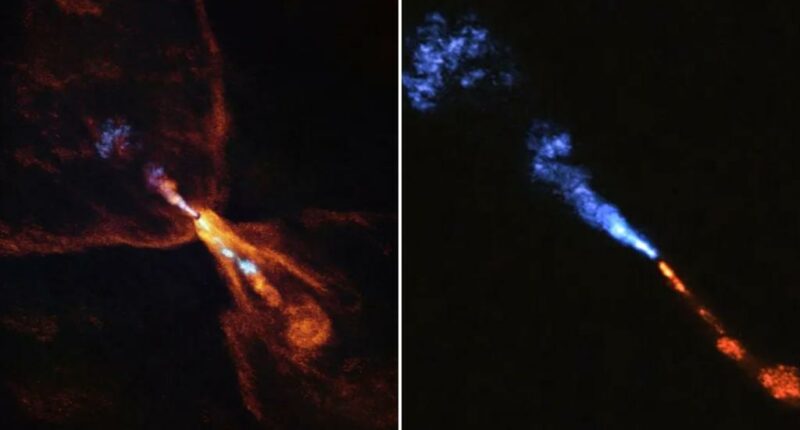Share this @internewscast.com
Astronomers have identified the earliest formations of rocky planet material in the gas surrounding a young star similar to our sun, offering a valuable insight into the early moments of our own solar system’s creation.
It’s an unprecedented snapshot of “time zero,” scientists reported Wednesday, when new worlds begin to gel.
“We’ve obtained a direct view of the heated region where planets like Earth begin to form around young protostars,” explained Melissa McClure from Leiden Observatory in the Netherlands, who led the research team. “For the first time, we can definitively state that the initial stages of planet creation are occurring at this very moment.”

The observations provide a rare look into the dynamics of a nascent planetary system, noted Fred Ciesla from the University of Chicago, although he was not part of the research published in the journal Nature.
“This is one of the things we’ve been waiting for. Astronomers have been thinking about how planetary systems form for a long period of time,” Ciesla said. “There’s a rich opportunity here.”
NASA’s Webb Space Telescope and the European Southern Observatory in Chile teamed up to unveil these early nuggets of planetary formation around the young star known as HOPS-315. It’s a yellow dwarf in the making like the sun, yet much younger at 100,000 to 200,000 years old and some 1,370 light-years away. A single light-year is 6 trillion miles.
In a cosmic first, McClure and her team stared deep into the gas disk around the baby star and detected solid specks condensing — signs of early planet formation. A gap in the outer part of the disk gave allowed them to gaze inside, thanks to the way the star tilts toward Earth.
They detected silicon monoxide gas as well as crystalline silicate minerals, the ingredients for what’s believed to be the first solid materials to form in our solar system more than 4.5 billion years ago. The action is unfolding in a location comparable to the asteroid belt between Mars and Jupiter containing the leftover building blocks of our solar system’s planets.
The condensing of hot minerals was never detected before around other young stars, “so we didn’t know if it was a universal feature of planet formation or a weird feature of our solar system,” McClure said in an email. “Our study shows that it could be a common process during the earliest stage of planet formation.”

While other research has looked at younger gas disks and, more commonly, mature disks with potential planet wannabes, there’s been no specific evidence for the start of planet formation until now, McClure said.
In a stunning picture taken by the ESO’s Alma telescope network, the emerging planetary system resembles a lightning bug glowing against the black void.
It’s impossible to know how many planets might form around HOPS-315. With a gas disk as massive as the sun’s might have been, it could also wind up with eight planets a million or more years from now, according to McClure.
Purdue University’s Merel van ’t Hoff, a co-author, is eager to find more budding planetary systems. By casting a wider net, astronomers can look for similarities and determine which processes might be crucial to forming Earth-like worlds.
“Are there Earth-like planets out there or are we like so special that we might not expect it to occur very often?”
















